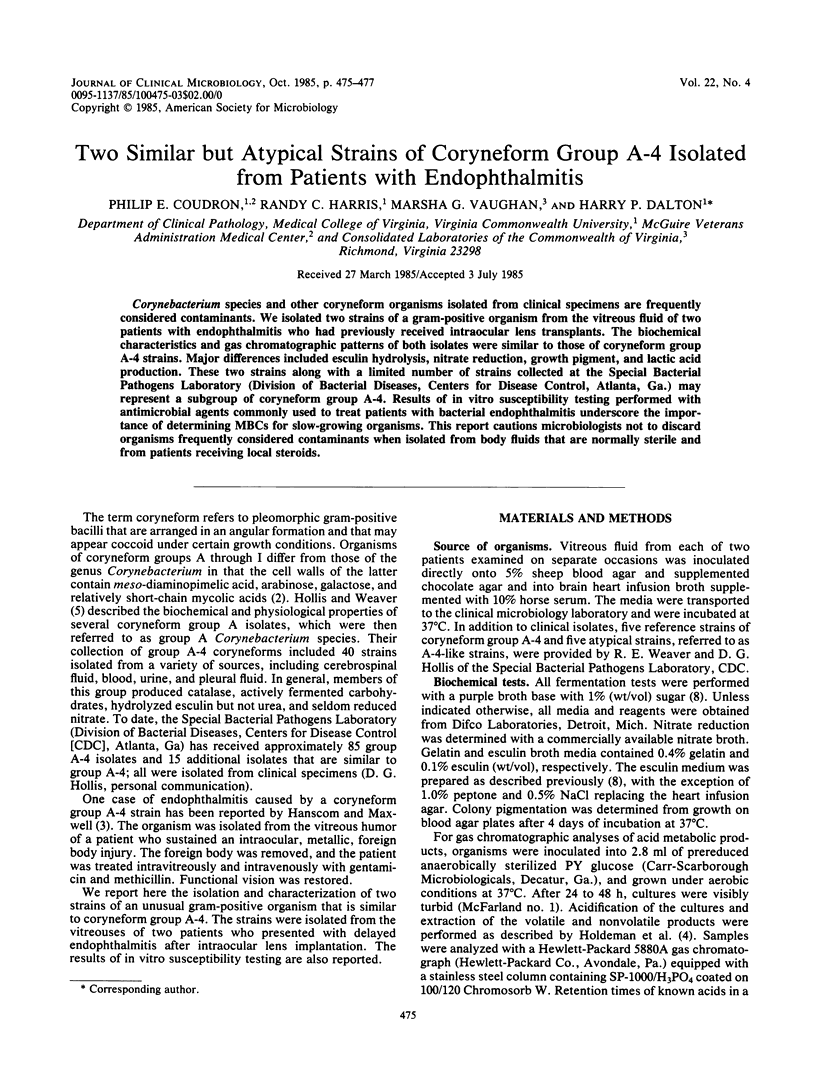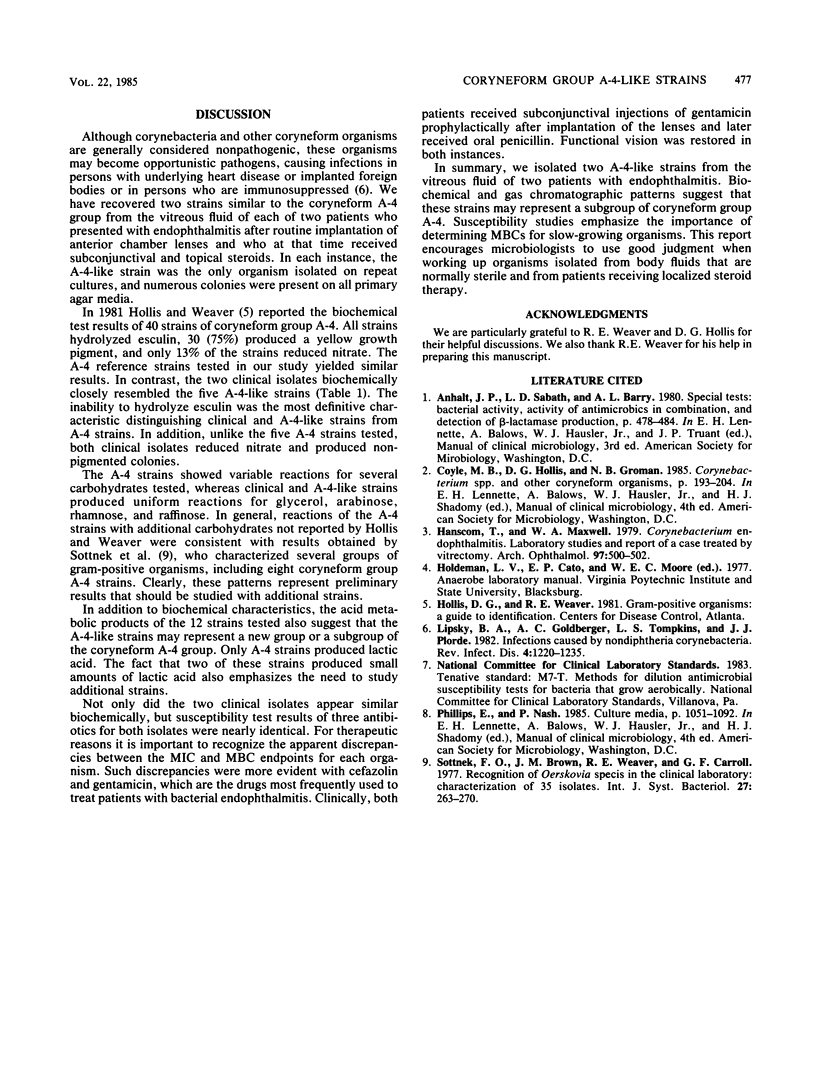Abstract
Corynebacterium species and other coryneform organisms isolated from clinical specimens are frequently considered contaminants. We isolated two strains of a gram-positive organism from the vitreous fluid of two patients with endophthalmitis who had previously received intraocular lens transplants. The biochemical characteristics and gas chromatographic patterns of both isolates were similar to those of coryneform group A-4 strains. Major differences included esculin hydrolysis, nitrate reduction, growth pigment, and lactic acid production. These two strains along with a limited number of strains collected at the Special Bacterial Pathogens Laboratory (Division of Bacterial Diseases, Centers for Disease Control, Atlanta, Ga.) may represent a subgroup of coryneform group A-4. Results of in vitro susceptibility testing performed with antimicrobial agents commonly used to treat patients with bacterial endophthalmitis underscore the importance of determining MBCs for slow-growing organisms. This report cautions microbiologists not to discard organisms frequently considered contaminants when isolated from body fluids that are normally sterile and from patients receiving local steroids.
Full text
PDF


Selected References
These references are in PubMed. This may not be the complete list of references from this article.
- Hanscom T., Maxwell A. Corynebacterium endophthalmitis. Laboratory studies and report of a case treated by vitrectomy. Arch Ophthalmol. 1979 Mar;97(3):500–502. doi: 10.1001/archopht.1979.01020010250013. [DOI] [PubMed] [Google Scholar]
- Lipsky B. A., Goldberger A. C., Tompkins L. S., Plorde J. J. Infections caused by nondiphtheria corynebacteria. Rev Infect Dis. 1982 Nov-Dec;4(6):1220–1235. doi: 10.1093/clinids/4.6.1220. [DOI] [PubMed] [Google Scholar]


